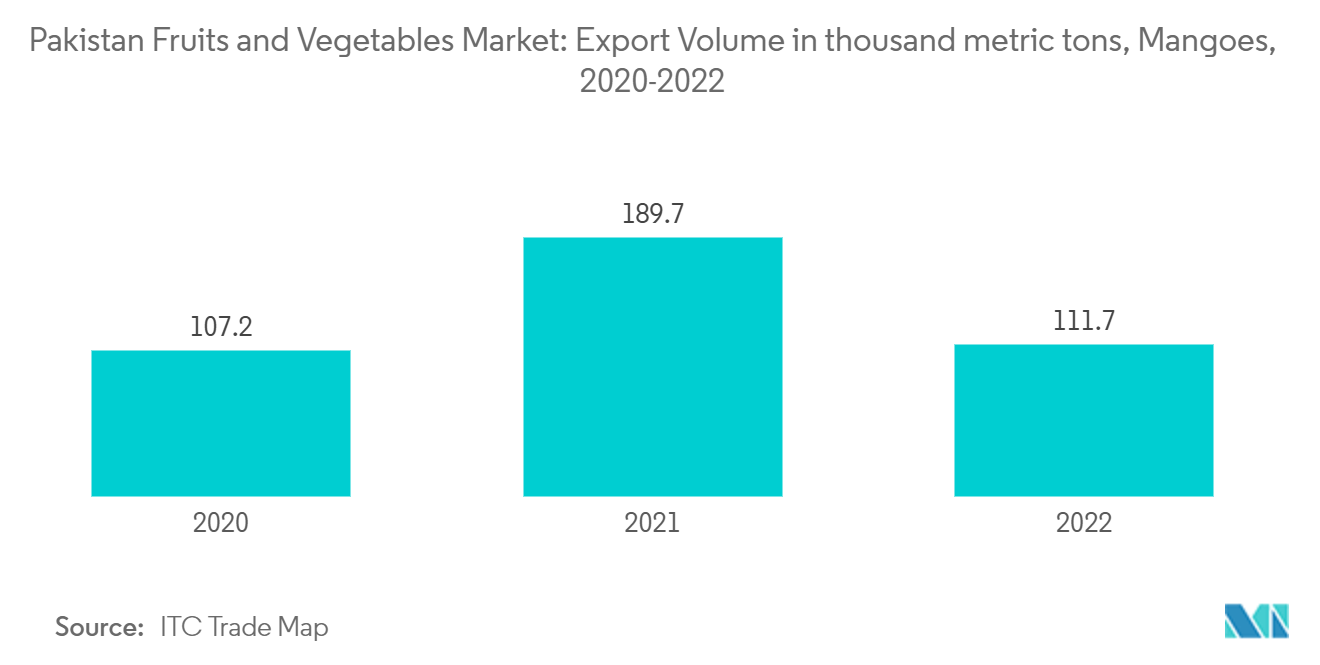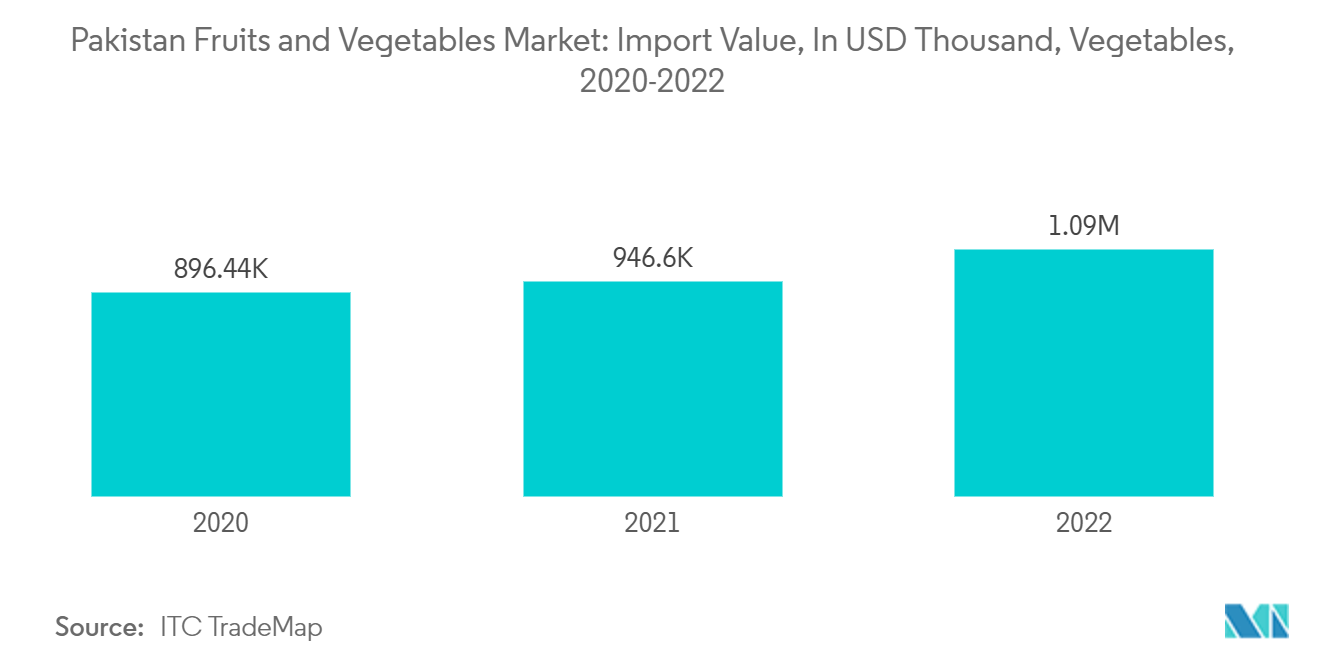Market Trends of Pakistan Fruits And Vegetables Industry
High Export Potential of Fruits and Vegetables
Due to its favorable environmental conditions, Pakistan ranks among the top global producers of citrus and mangoes, with the majority of production occurring in the Sindh and Punjab regions. Pakistan contributes 1.5% to the global export market for citrus fruits. In response, the government has launched several projects and strategies to boost the production of fruits and vegetables. One such initiative is the "National Programme for Enhancing Command Area of Barani Areas of Pakistan," which commenced in 2021 intending to cultivate over 18,000 hectares of fruit crops within five years.
Additionally, the government has developed strategies like the 'Pakistan Export Strategy 2023-2027' under the National Priority Sectors Export Strategy (NPSES) Initiative, identifying fruits and vegetables as key sectors to enhance exports over the next five years. These initiatives aim to increase productivity by introducing climate-resilient varieties and reducing crop losses caused by climate change. Citrus and mangoes, accounting for more than 60% of Pakistan's total fruit exports, have seen a 20% decline in mango production in 2023, marking the third consecutive year of reduced output, which has impacted exports. The strong export potential of fruits and vegetables, along with the push by various government initiatives and the prospect of increased production, is expected to drive the market in the coming years.

Increasing demand for Vegetables
Due to low domestic production, Pakistan relies on importing vegetables to satisfy its internal demand. The International Trade Center reports that vegetable imports have a larger presence in the Pakistani market than fruit imports. From 2019 to 2022, the value of vegetable imports surged by 77%. The primary countries exporting vegetables to Pakistan are Australia, Afghanistan, Russia, and Canada. The most commonly imported vegetables include potatoes, tomatoes, onions, shallots, garlic, leeks, cabbage, cauliflower, kohlrabi, kale, lettuce, chicory, carrots, turnips, cucumbers, gherkins, and coconuts.
The Pakistan National Nutritional Survey reveals that 39.6% of households face food insecurity. With the initiatives such as Pakistan’s Vision 2030 aim to boost agricultural production in rural areas through new practices, encourage investment in value-added products, and improve storage facilities, which are expected to enhance vegetable productivity. Furthermore, the daily dietary significance of vegetables such as onions, potatoes, and tomatoes, coupled with the growing consumer awareness of fresh and natural foods in urban regions, is propelling the demand for vegetable consumption, which is anticipated to rise in the coming years.


